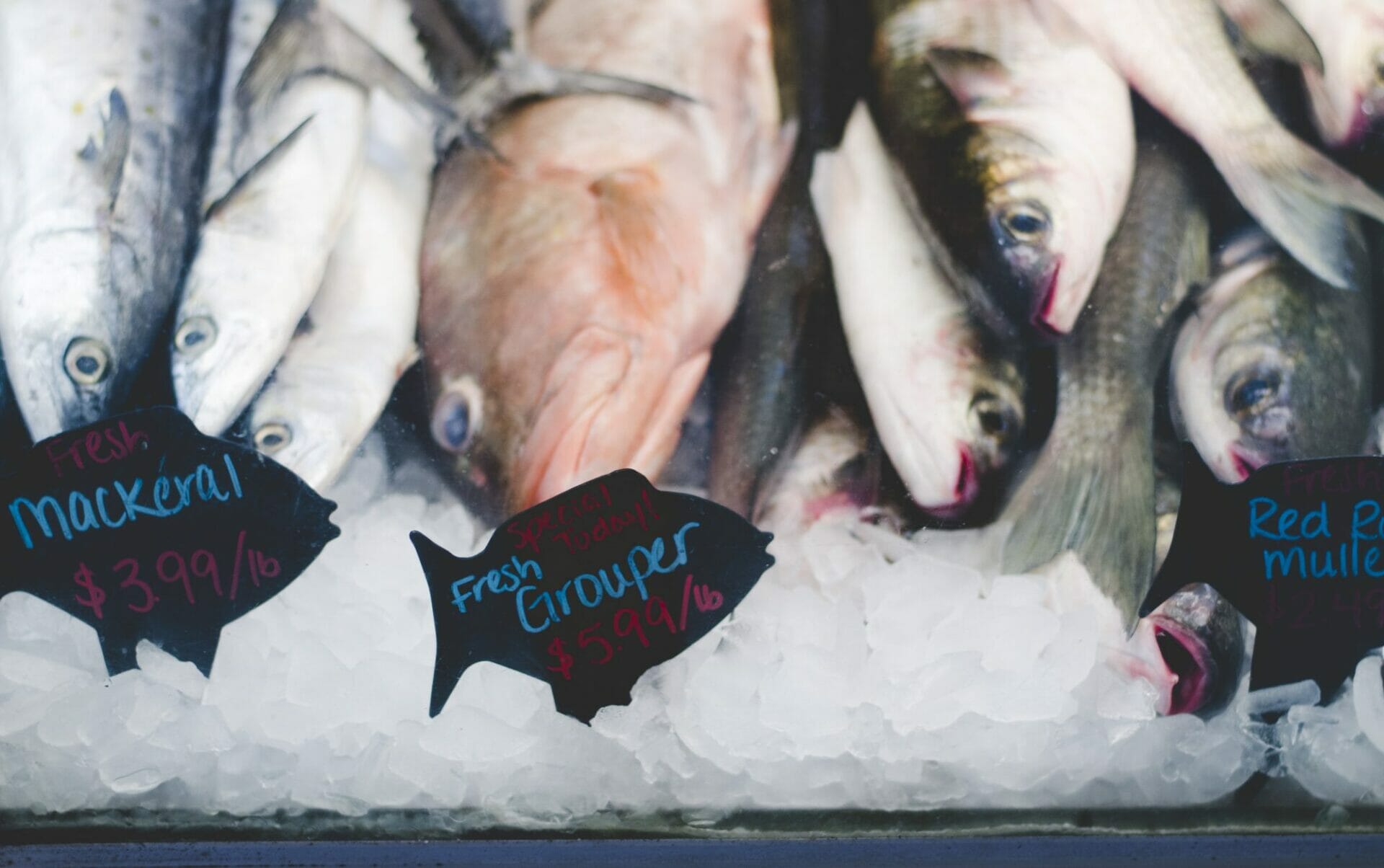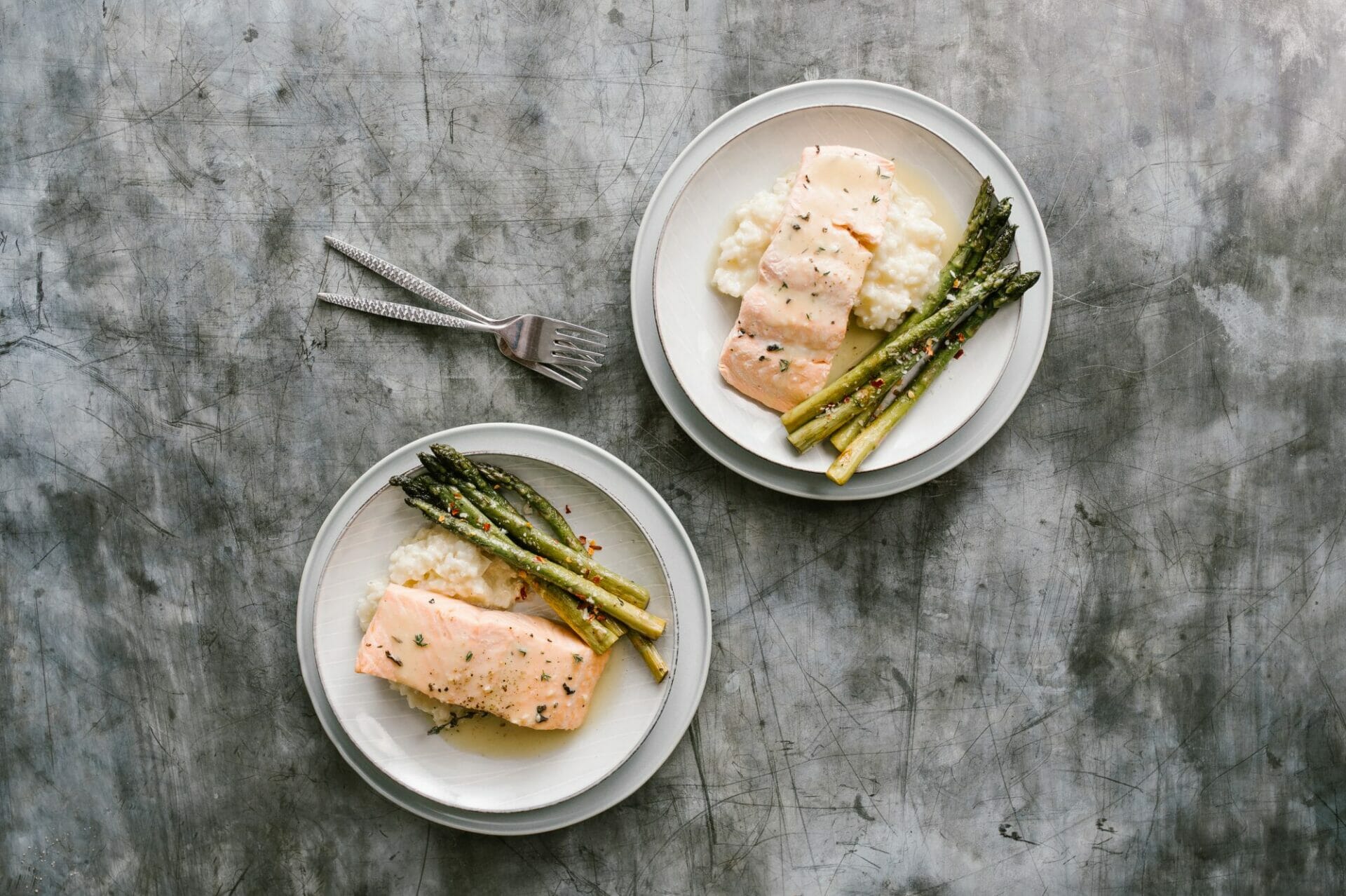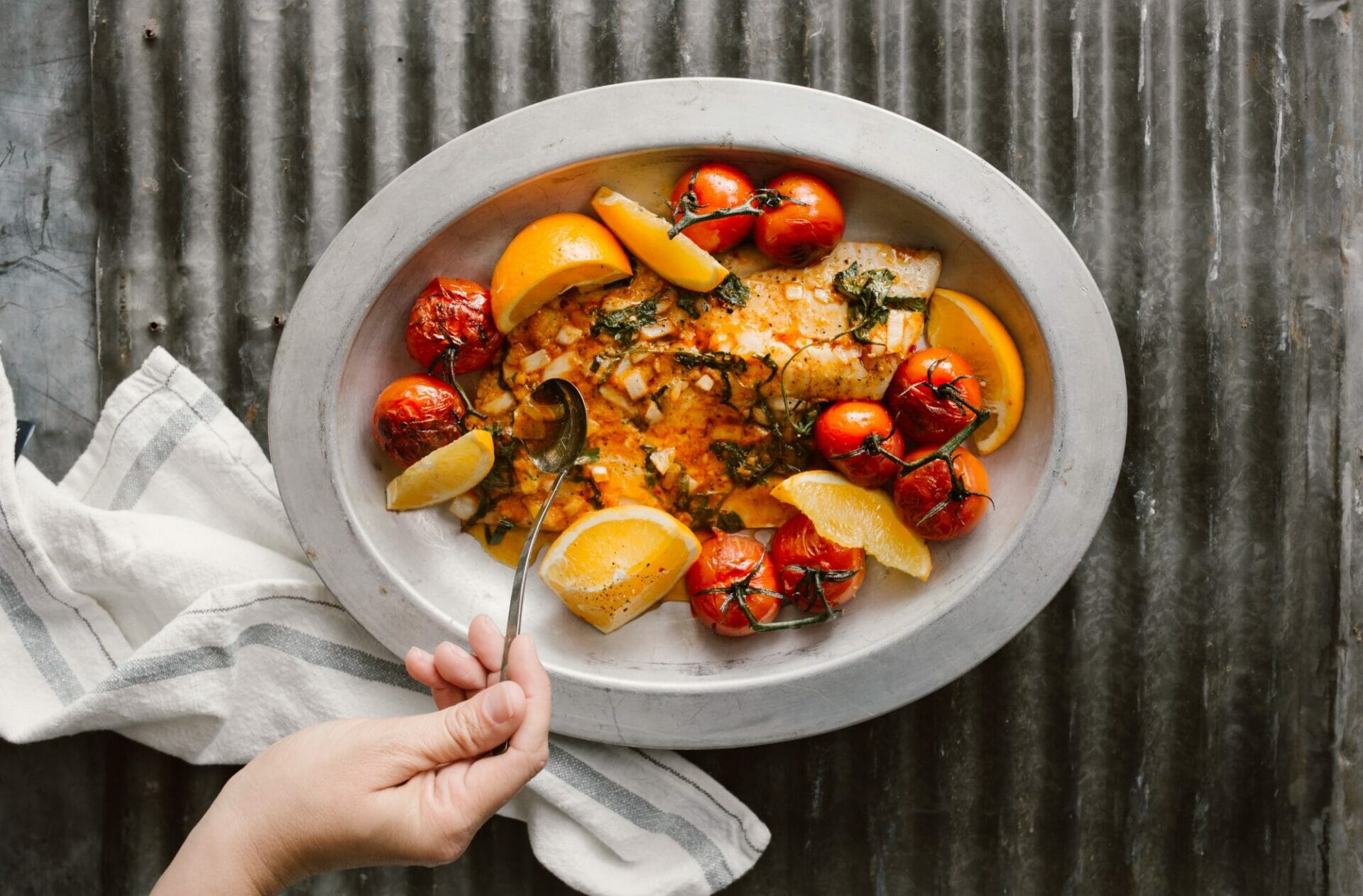Some kitchen skills are intimidating yet essential to the modern home chef. In our Kitchen Skills series, we hone in on the often underrated techniques that can create a masterpiece out of simplicity. In this issue, learn how to purchase and prepare seafood for your family, as well as impress your friends at dinner parties with knowledge of the nutritional benefits of a steady diet of seafood.
Photography by Tina Sargeant // Set Styling by Lisa Malott
The Nutrition Facts
We all have a murky sense that seafood is part of a healthful diet, but rumors and misinformation swimming around finned food only muddy the water. Here is a summation of the best-understood evidence on why fish is an excellent addition to your family’s table.
Fish is an excellent source of lean protein. A single serving of salmon or tuna provides up to 24 grams of protein; scallops with up to 27 grams per serving. That packs quite a protein punch, especially since the meat contains notably less fat compared to similar portions of red meat. Additionally, fats found in fish are widely believed to improve heart, eye, and skin health. A compelling body of research suggests that omega-3 fatty acids may reduce the risk of coronary heart disease — one of the leading causes of death among Western countries. Because humans do not produce these important fatty acids within our bodies, we must get them from our diet or through supplements.

According to nutritional information published by Publix Supermarkets, “fattier fish … like Atlantic salmon, typically contain 1,825 milligrams of omega-3 fatty acids per serving,” meaning that eating healthier fats and lean protein doesn’t have to be an upstream swim. In a study by the Journal of the Academy of Nutrition and Dietetics, omega-3 acid docosahexaenoic (DHA) has also been shown to support brain and eye development in babies and support health in aging populations. That’s a whale-sized body of evidence to support the consumption of fish as a regular part of your diet. Of course, all things should come in moderation; the Seafood Nutrition Partnership, a national non-profit organization, recommends an average of eight ounces of seafood a week to maintain a healthy mind and body.

Goin’ Fishin’
Fresh and saltwater fishing employs over 130,000 Floridians, but the thought of picking out fish at a market might have some feeling green around the gills. Whether it’s your first time on the docks or you are a well-seasoned fish-finder, use these simple tips to determine which fish you should flip on your frypan (sorry if my humor flops flatter than a flounder).
1.
If you are buying a fish whole, the eyes should be bright and shiny, and the gills should be clean and red. As the fish ages, its scales grow dull and squishy, so look for a glistening metallic sheen.
2.
Did you know that fish have noses but barely any sense of smell? This is also true at the market: fresh fish should barely smell. A good, clean market might smell briny but not like the back end of a chum factory. If the smelt smells fishy, don’t bring it home.
3.
Whether you are buying salmon steaks, haddock fillets, or a whole cod, the flesh should not be too soft and sticky. Ask the seller to poke the poke (another fish pun; poke is a sublime raw Hawaiian fish dish) and look for bright, firm flesh that springs back.
When you bring home your catch, give it a gentle wash in cold water and pat dry. Wrap it in waxed paper or aluminum foil and store it in the coldest part of your fridge for up to two days. Large cuts and leaner meats keep better than smaller, fattier fish. As with all the best cuisine, freshness is key; so don’t be afraid to order your fish ahead and pick it up the day of your meal. Alternatively, fish freezes excellently for up to three months as long as it is protected from water and air. Defrost the fish immediately before cooking.

[accordion]
[item title=”EARL GREY–POACHED SALMON”]
EARL GREY–POACHED SALMON

This is a largely hands-off process that allows you to prepare side dishes while the fish poaches. Everything finishes cooking at the same time, and your family and guests will put their fins together to applaud your organizational prowess.
Ingredients:
Juice of one lemon
One onion, halved
One fennel bulb, halved
Earl Grey tea, half tablespoon, or one sachet
Two celery stalks, halved
A few sprigs of thyme and dill
Bay leaf and other aromatics, as desired
A pinch of salt and a few cracks of black pepper
Two to four salmon fillets
Cold water, as needed
In a large pot, combine all of the cut vegetables, salt, pepper, and tea. Use the vegetables as a base and gently place the salmon filets on top. Cover with enough cold water to cover the fish, and place the pot on medium heat. Let the poaching liquid come to around 170°F, and adjust the burner so that the water temperature is maintained but remains below a boil. Let it cook until the salmon measures 115°F on a digital thermometer inserted into the thickest part of the meat. Remove the salmon and let it rest before garnishing and digging in. The whole process from start to finish should take about 20 minutes or less.
[/item]
[item title=”ORANGE-TARRAGON BAKED HADDOCK”]
ORANGE-TARRAGON BAKED HADDOCK

Baking is another simple technique that translates well to a variety of seafood. The butter keeps the moisture and flavor sealed inside the haddock and can be used to make a sauce once the pan is out of the oven.
Ingredients:
Haddock fillets, about two pounds
Freshly cracked black pepper and salt, to taste
Three tablespoons of melted butter
1 tablespoon of minced garlic
Parsley and tarragon, as much as you like
1/2 teaspoon of smoked Spanish paprika
A squeeze of fresh orange
Preheat the oven to 350°F. Gently wash the haddock in cold water and pat dry. Arrange in a small greased baking dish with high sides; a glass Pyrex dish works well here. Mix all of the seasonings and herbs in the melted butter, and coat the fish. Bake until the internal temperature reaches 125°F. Squeeze the orange over the haddock and let it rest for a few minutes before gobbling it down like a piranha.
[/item]
[item title=”BUTTERY PAN-SEARED SCALLOPS”]
BUTTERY PAN-SEARED SCALLOPS

Make sure to purchase “dry packed scallops” which will taste and handle much better. Sometimes scallops come packaged “wet treated,” which means soaked in phosphate preservatives and sodium … blech! “Dry” scallops will be a pinkish ivory color. Let them sit at room temperature in a few towels to absorb excess water before searing. These should be served immediately after searing, so make sure the rest of your meal is prepared so that these jewels of the sea can go right to the table.
Ingredients:
About 1½ pounds of “dry” scallops
Freshly cracked black pepper and salt, to taste
Vegetable oil, as needed
Butter, a few small pats
A squeeze of fresh lemon
After draining and patting the scallops dry, season on both sides with salt and pepper. Meanwhile, heat a wide nonstick skillet over high heat with enough vegetable oil to coat the bottom. Once the oil is very hot, add half of the scallops so that they sear on a single layer and the pan isn’t crowded. Let them sizzle without moving until beautifully browned on the bottom; about 1½ to 2 minutes. Add a little pat of butter to the pan and use tongs to flip each scallop. Let the other side sear for about 45 seconds more until the flesh is opaque and slightly firm. Carefully transfer the cooked scallops to a plate and cover loosely with aluminum to keep warm while you do the second batch. Give your scallops a little squeeze of the lemon as garnish and serve right away.
[/item]
[/accordion]
